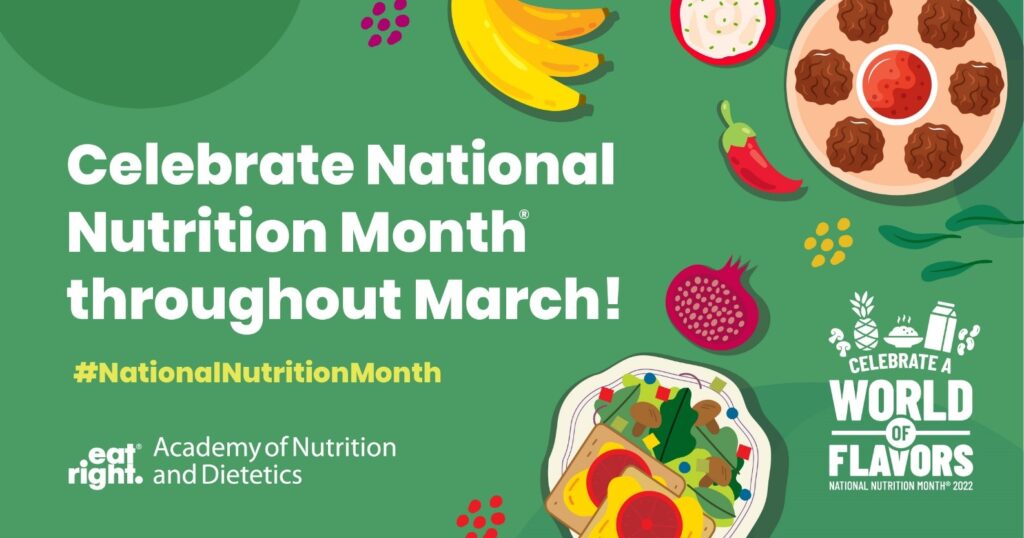
In March, the Academy of Nutrition and Dietetics focuses attention on healthful eating through National Nutrition Month®. This year’s theme, Celebrate a World of Flavors, embraces global cultures, cuisines and inclusivity, and highlights the expertise of registered dietitian nutritionists.
Celebrate a World of Flavors highlights the unique, cultural variety of foods available to people from around the world and the role that registered dietitian nutritionist play in helping clients create healthy habits while celebrating their cultural foods and heritage. Celebrating the cultural heritage, traditions and recipes from all people is a tasty way to nourish ourselves, learn about one another and find appreciation in our diversity.
During National Nutrition Month®, the Academy encourages everyone to make informed food choices and develop sound eating and physical activity habits they can follow all year long.
Our world is full of different foods, spices, and various ways of cooking. One thing that stands out is that there are certain diets around the world that help people live the longest and who do not develop chronic diseases such as heart disease, diabetes, or cancers. The healthiest diets include natural foods, no processed food and appropriate portion sizes. Let us look at some of these diets:
Mediterranean Diet—focuses on whole grains, fruits, vegetables, legumes, and healthy fats. Fish and poultry are consumed in moderation while meat, sugar and salt are used only on occasion.
Okinawa Diet—focuses on fruits and vegetables with modest amounts of seafood and lean meats.
Loma Linda California—fruits, vegetables, nuts, and whole grains.
West African—fruits, vegetables, whole grains, and fish.
You can probably see that there are similar features in each of these diets—fruits, vegetables, whole grains, limited portions of meat, poultry, and seafood, and no processed foods.
How can we apply this to the typical Western Diet, which is high in processed food, low in fruits and vegetables and high in meat, poultry, and seafood? Here are some tips:
- Focus on including more fruits and vegetables, nuts, seeds, legumes
- Limit portion sizes of meat, poultry, and seafood
- Use sugary foods for occasional purposes not on a regular basis
- Consume natural foods instead of processed foods
- Purchase as much local produce as possible
- Drink plenty of water and avoid sugary drinks
Eating more fruits, vegetables, whole grains and less meats and processed food could help you to reduce your risk of chronic diseases such as heart disease, diabetes, and cancer.
Some world flavors can include:
- Vietnamese: Minimal use of oil and dairy—relies on light, fresh flavors of herbs and vegetables
- Indian: Diverse use of spices (cumin, turmeric, spice blends)
- Spanish: Emphasis on fresh, regional dishes (mostly seafood and produce)
- Mexican: Packed with flavor (chilis, garlic, cilantro, etc.)
- Japanese: Colorful, healthy dishes (seafood, rice/noodles, vegetables)
During the month of March for National Nutrition Month®, pick one thing to work on first and once you have mastered it, move on to another area of your diet that needs improvement.
Then keep going…You can do it!
Adapted from: National Geographic & Nature’s
